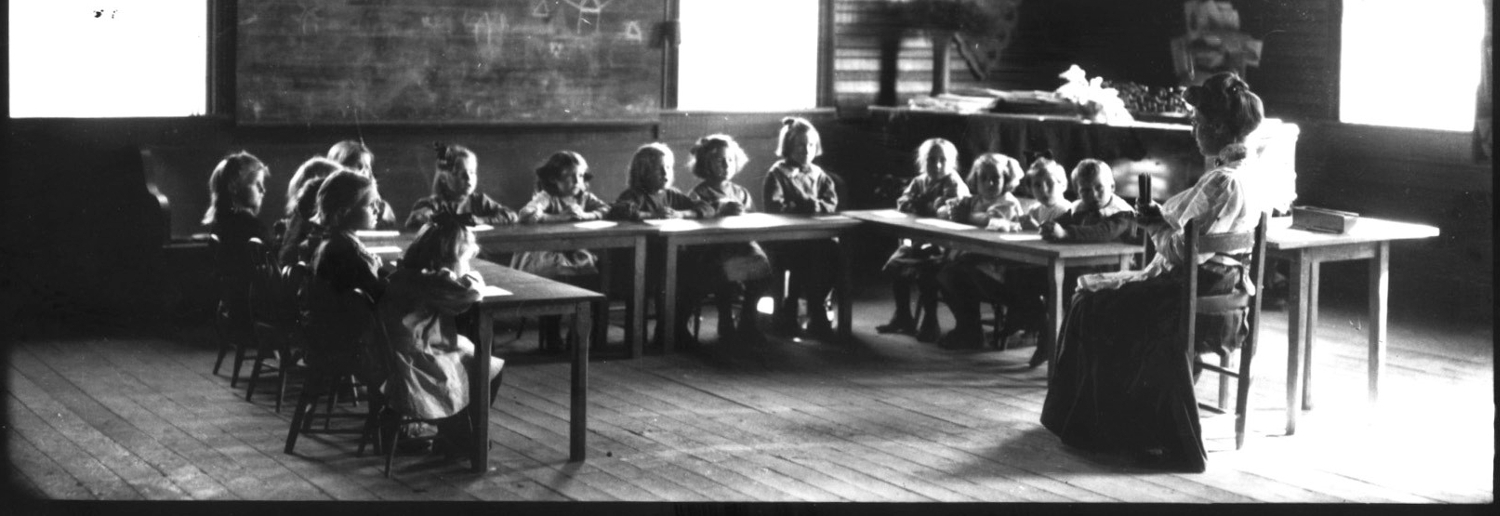 Oneida Baptist Institute
Oneida Baptist Institute
A Godly Heritage
Oneida Baptist Institute was founded in 1899. The turn of the century was a dark time in the eastern Kentucky mountains. There was mass illiteracy and few schools. Men and boys were being killed in bloody feuds.
OBI's founder, James Anderson Burns, sought to end the feuds by uniting families of warring clans in a common goal: Christian education for their children.
 "The idea was to give the children religious education ...
"The idea was to give the children religious education ...
till they learned to love one another and forgot how to hate ..." James Anderson Burns,
Founder of Oneida Baptist Institute
Burns succeeded. His founding Board of Trustees were native mountaineers of warring clans. These men worked with Burns to construct a one-room building.
The school opened with 100 students and four teachers on January 1, 1900. Tuition was $1.00 per month, which many families could not afford to pay. At times, Burns accepted sheepskin, coal, and even a bull as tuition. He turned no one away. Students also worked on campus to help pay their way.
By 1905, Oneida Baptist Institute had dormitories for boys and girls. Thanks to a generous gift from a private donor in New York, "Professor" Burns was able to buy land in 1910 for a school-run farm.
Burns took to the lecture circuit to raise funds for his beloved school. Known as "Burns of the Mountains," he told the Oneida story far and wide. By 1930, his school for Kentucky mountain children had several hundred supporters across the United States.
A Ministry of Faith
In 1946, Oneida Baptist Institute entered a covenant agreement with the Kentucky Baptist Convention and became partly funded by the Cooperative Program.
The vast majority of income, however, continued to come from individual donors and churches. Oneida was and is still a ministry of faith.
Expanding the Vision
The 1950s were marked by a steady change in the student population. More young people from other states began coming to Oneida, and the school was approved for international students. When public elementary education became available in the area, OBI discontinued its elementary classes and accepted only students in high school. The middle school grades were added in the 1980s.
The 1950s also brought different kinds of young people to Oneida. No longer just a school for isolated mountain children, OBI became a haven for youth from difficult situations.
Spiritual Traditions
Students had always participated in chapel, Sunday School, and worship. They were now required to complete a one-year Bible course in order to graduate. An average of 100 youth were won to Christ each year. Students began to enroll in the Oneida school simply because they were seeking a distinctly Christian education.
Continued Growth
Boys' basketball and baseball were OBI's team sports in its earliest years. In the 1940s, drama, yearbook, high school choir, and Baptist Student Union were added as co-curriculars. The student newspaper, wrestling club, track, and swimming were added in the 60s.
The 1970s and 80s saw marked expansion in campus facilities and co-curricular activities. During these years, OBI added band, soccer, academic team, cross country, tennis, volleyball, girls' basketball, and softball.
The summer school program began in 1974, and in 1976, OBI opened a unique Tutoring Lab to help students with remedial reading and math skills.
In the 80s and 90s, Oneida entered the technological arena and has made ongoing improvements to keep pace with the ever-changing needs of new generations of students.
Diverse Student Body
The 1970s also brought a tremendous increase in Oneida's student population. By 1979, young people from 13 states and 12 other countries were enrolled.
A Steadfast Hope
Oneida Baptist Institute continues to honor her Godly heritage by offering affordable, quality, Christian education to young people from all walks of life and maintaining an atmosphere where teenagers can grow physically, mentally, socially, and spiritually.
